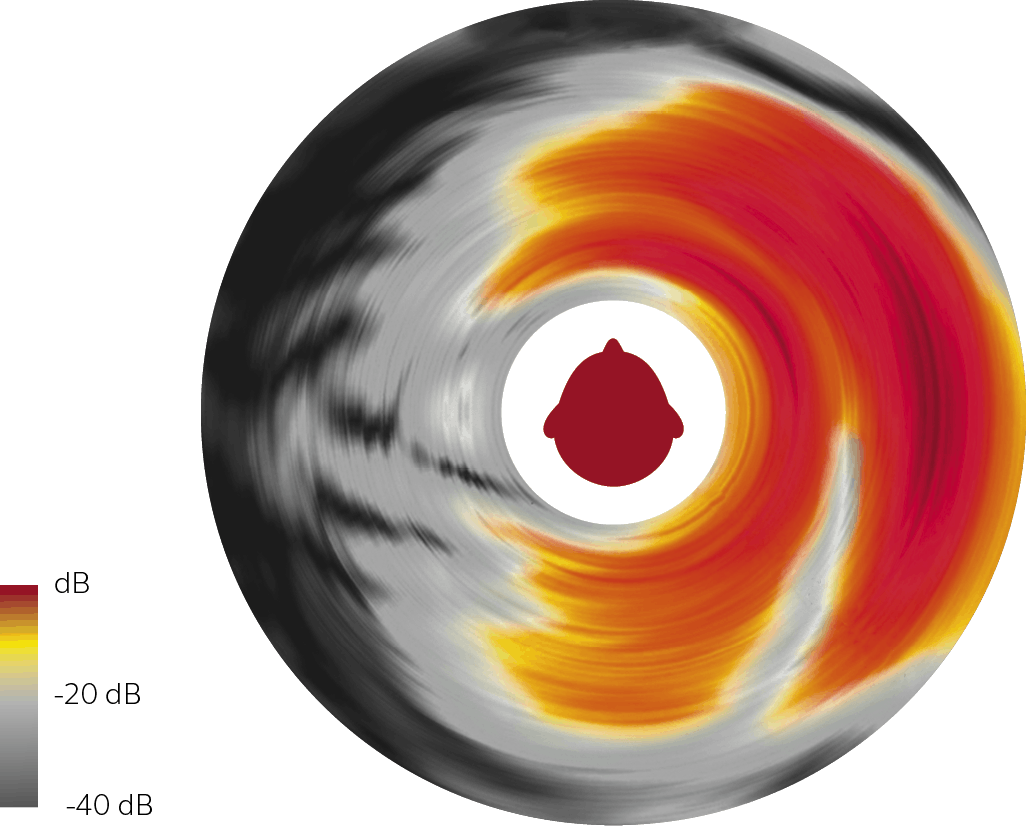Spatial Sense
RoleReplaces spatial cues that are disrupted due to hearing aid placement behind the ear and the effects of wide dynamic range compression.
End user benefit
Vivid spatial awareness with exceptional sound quality.
Spatial Sense is a combination of two algorithms. The first is a pinna restoration algorithm. It reproduces the monaural spectral cues of the open ear that are disrupted by positioning the hearing aid microphone outside of the pinna. The second algorithm preserves the Interaural Level Difference (ILD), which is the natural difference in the levels of sound reaching each ear that are caused by the head shadow. This is an important binaural localization cue that can be disrupted by Wide Dynamic Range Compression.

This figure shows the angledependent attenuation for the unaided right ear. Dark red indicates little-to-no attenuation. The characteristic attenuation pattern for the unaided ear is emulated by Spatial Sense.
| Without amplification The signal reaches the left ear at 70 dB, and then the right ear at 60 dB. The interaural level difference (ILD) is thus 10 dB, because of the shadowing effect of the head. It is easy to perceive that the sound comes from the left side. |
|
| With WDRC amplification WDRC may add 5 dB gain on the left and 10 dB on the right because softer sounds are amplified more by WDRC. The ILD is thus reduced to 5 dB – it is more difficult to perceive where the sound comes from. |
|
| With WDRC amplification AND Spatial Sense Spatial Sense calculates the correct ILD and preserves it by aligning the gains of the two hearing aids based on Ear-to-Ear data exchange. |
|
The ear-to-ear data exchange between hearing aids is analogous to the crossing of signals between ears in the auditory system. This helps to emulate ILD preservation in a way most similar to the normal auditory processes.

| RESOUND MODEL | CHOICE |
| LiNX Quattro 9 / LiNX 3D 9 / ENZO 3D 9 | Spatial Sense available |